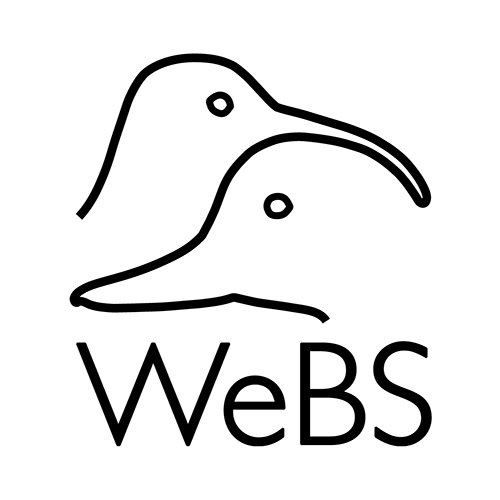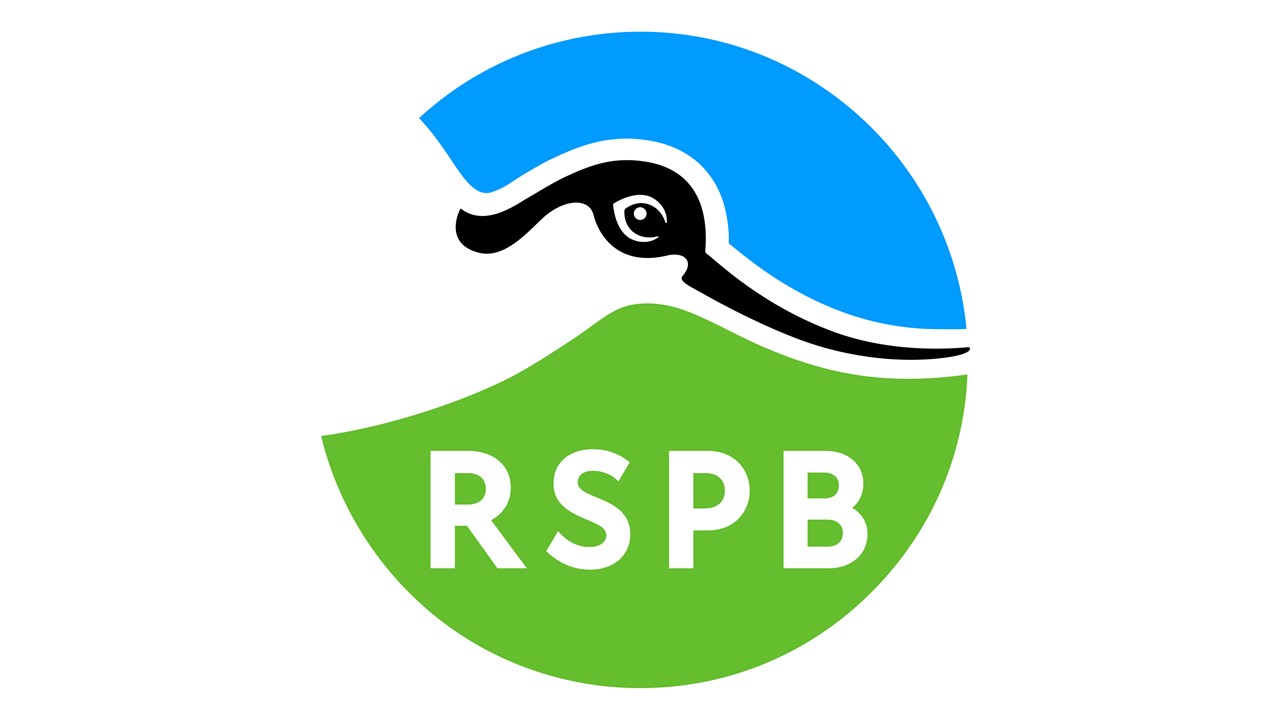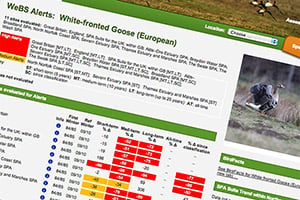WeBS Alerts
The United Kingdom holds internationally important numbers of non-breeding waterbirds, and the government has agreed to international obligations to protect these populations. Continued monitoring of wintering waterbirds in the UK is essential if populations are to be managed and conserved effectively. A key use of the data collated by WeBS Core Counts is to identify and measure changes in numbers, to highlight where conservation action should be directed.
Identifying changes in waterbird numbers
The WeBS Alerts system provides a standardised method of identifying changes in numbers of waterbirds at a variety of spatial and temporal scales. The WeBS Alerts report provides a review of the status of species on sites in the UK which are designated due to their conservation value for waterbirds. Species that have undergone major declines in numbers are flagged, by the issuing of an Alert.
Alerts are advisory; subject to interpretation, they should be used as a basis on which to direct research and subsequent conservation efforts if required.
WeBS Report Online – Alerts
The WeBS Alerts report is delivered via a dedicated section of the WeBS Report Online interface at www.bto.org/webs-reporting-alerts, where the reports published in 2013, 2019 and 2025 can be found. Earlier WeBS Alerts reports were published separately.
The 2025 report contains results for 87 Special Protection Areas (SPAs), 212 Sites of Special Scientific Interest (SSSIs) and 19 Areas of Special Scientific Interest (ASSIs). There are also assessments for Northern Ireland, Great Britain, England, Wales, Scotland, the relevant Great Britain SPA suite and the relevant Northern Ireland SPA suite as appropriate for 46 species or species populations.
For SPA features, there are species accounts which describe the site results in the context of the wider region and country. Although it is not the aim of the report to suggest drivers of change underpinning any given Alerts, where possible comparison with regional and national trends are used to suggest whether such changes are likely to be responses to local pressures (which may be addressed by site management) or broader-scale changes (for example redistribution at regional or national levels in response to climate change).
Non-features on each site were also assessed and are tabulated below the species feature table, but any declines in these non-feature species do not trigger Alerts.
Methods and Interpretation
The Alerts process assesses the change in numbers over short-, medium- and long-term periods (5, 10 and up to 25 years respectively) as well as compared to the site baseline period in the case of SPAs.
The change is calculated by smoothed trends fitted through site species indices to iron out temporary fluctuations, for example caused by the severity of a single winter. Declines of between 25% and 50% over the period trigger Medium Alerts which are flagged in amber/orange and declines of greater than 50% trigger High Alerts which are flagged in red.
2025 Results Summary
These stacked histograms show the Alerts status at each SPA during the short-, medium- and long-term and since the SPA baseline period. Select an image to enlarge.
Each bar represents an SPA identified by name, sized according to the number of waterbird species for which the site is designated, and divided according to the Alerts status of those species. Red = High Alert (>50% decrease), Orange = Medium Alert (25%-50% decrease), Grey = stable (25% decrease to 33% increase), Pale Green = Medium Increase (33%-100% increase), Dark Green = High Increase (>100% increase).
|
SPA-Species Assessment |
Short-term |
Medium-term |
Long-term |
Since Baseline |
|
High Alert (>50% decrease) |
46 |
69 |
147 |
142 |
|
Medium Alert (25–50% decrease) |
87 |
89 |
106 |
83 |
|
Stable |
292 |
250 |
151 |
148 |
|
Medium Increase (33–100% increase) |
54 |
64 |
45 |
46 |
|
High Increase (>100% increase) |
25 |
33 |
57 |
61 |
|
Total |
504 |
505 |
506 |
480 |
|
SSSI/ASSI-Species Assessment |
Short-term |
Medium-term |
Long-term |
|
High Alert (>50% decrease) |
180 |
265 |
434 |
|
Medium Alert (25–50% decrease) |
224 |
234 |
205 |
|
Stable |
569 |
446 |
279 |
|
Medium Increase (33–100% increase) |
168 |
162 |
111 |
|
High Increase (>100% increase) |
84 |
131 |
207 |
|
Total |
1225 |
1238 |
1236 |
These tables show the total number of assessments of species features on SPAs and SSSIs/ASSIs for the time periods, grouped by the Alerts status of those species.
More detailed results for every site and species can be found at the Alerts section of WeBS Report Online. There is also more summary information for the SPA results on the JNCC website for the Official Statistic, Population trend Alerts for non-breeding waterbirds on Special Protection Areas (SPAs) of international importance.
Citation
The latest WeBS Alerts report should be cited as:
Caulfield, E.B., Feather, A., Smith, J.A., Frost, T.M. & Woodward, I.D. 2025. Wetland Bird Survey Alerts 2021/2022: Changes in numbers of wintering waterbirds in the Constituent Countries of the United Kingdom, Special Protection Areas (SPAs), Sites of Special Scientific Interest (SSSIs) and Areas of Special Scientific Interest (ASSIs). BTO Research Report 786. BTO, Thetford. www.bto.org/webs-reporting-alerts
I’m interested in a similar assessment for another site
Similar analyses for sites other than those SPAs, SSSIs and ASSIs encompassed by the WeBS Alerts Report may be made available at cost. Typically such sites would include those outside of these protected site networks. At a finer scale, BTO can also undertake WeBS sector plot analyses to assist in identifying changes within large sites. Please contact us via webs@bto.org to discuss.















Share this page